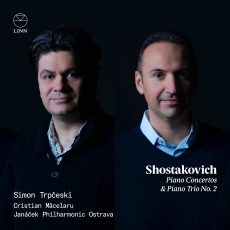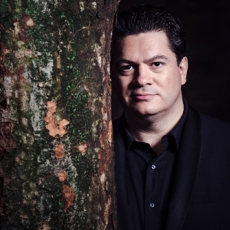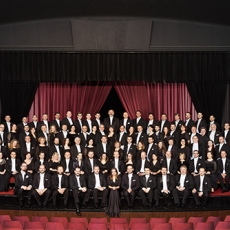Simon Trpčeski, Cristian Măcelaru & Janáček Philharmonic Ostrava - Shostakovich: Piano Concertos & Piano Trio No. 2 - Fanfare
The breadth of Shostakovich’s genius, and his emotional reach from prankster to mourner, is revealed in this new release by the acclaimed Macedonian pianist Simon Trpčeski, his second since he signed in 2020 with the British audiophile label Linn.
In previous recordings of concertos by Prokofiev and Rachmaninoff, I thought that Trpčeski, despite his virtuoso technique, deliberately underplayed the solo part, presumably so that the audience noticed the music behind the fireworks. But that was too little of a good thing, and here, brandishing his technical skills in the two high-spirited, buoyant Shostakovich piano concertos, he comes out of his shell, delivering flashy, rollicking pianism, just what these scores cry out for. Shostakovich, we learn from the well-written program notes, started the piano relatively late, at age nine, but quickly progressed to playing the whole of The Well-Tempered Clavier, and by 15 he could perform the “Hammerklavier” Sonata. He remained a remarkable pianist until ill health forced his retirement as a performer in the late 1950s. But inside knowledge of the instrument allowed Shostakovich to write a bravura solo part for himself in Piano Concerto No. 1 and to seem to produce its equal in No. 2, although it is considerably less taxing and was written for his 19-year-old son Maxim.
Trpčeski radiates charisma in both works, sounding dazzling and assertive. His treatment of the slow movements is touchingly poetic.
Shostakovich’s Piano Trio No. 2 is a wartime masterpiece from 1943–44, composed at the same time as the Eighth Symphony, whose melancholy depth of emotion it shares. It has received numerous outstanding recordings, but this one led by Trpčeski is especially sensitive to the nuances of the music; the pianist applies his elegance and restraint to make us pay attention to Shostakovich’s sorrow. The Scherzo is therefore somewhat subdued, while the Passacaglia in the slow movement is unutterably tender. The obsessive repetition of the Jewish dance in the finale feels like the inescapable reach of tragedy beneath the restless rhythmic bounce of the theme.
For anyone who wants all three of these works on a single disc, I can offer an unqualified recommendation. Experienced collectors will already be wedded to their old favorites in each case, but they shouldn’t pass up such a thoroughly enjoyable collection.



